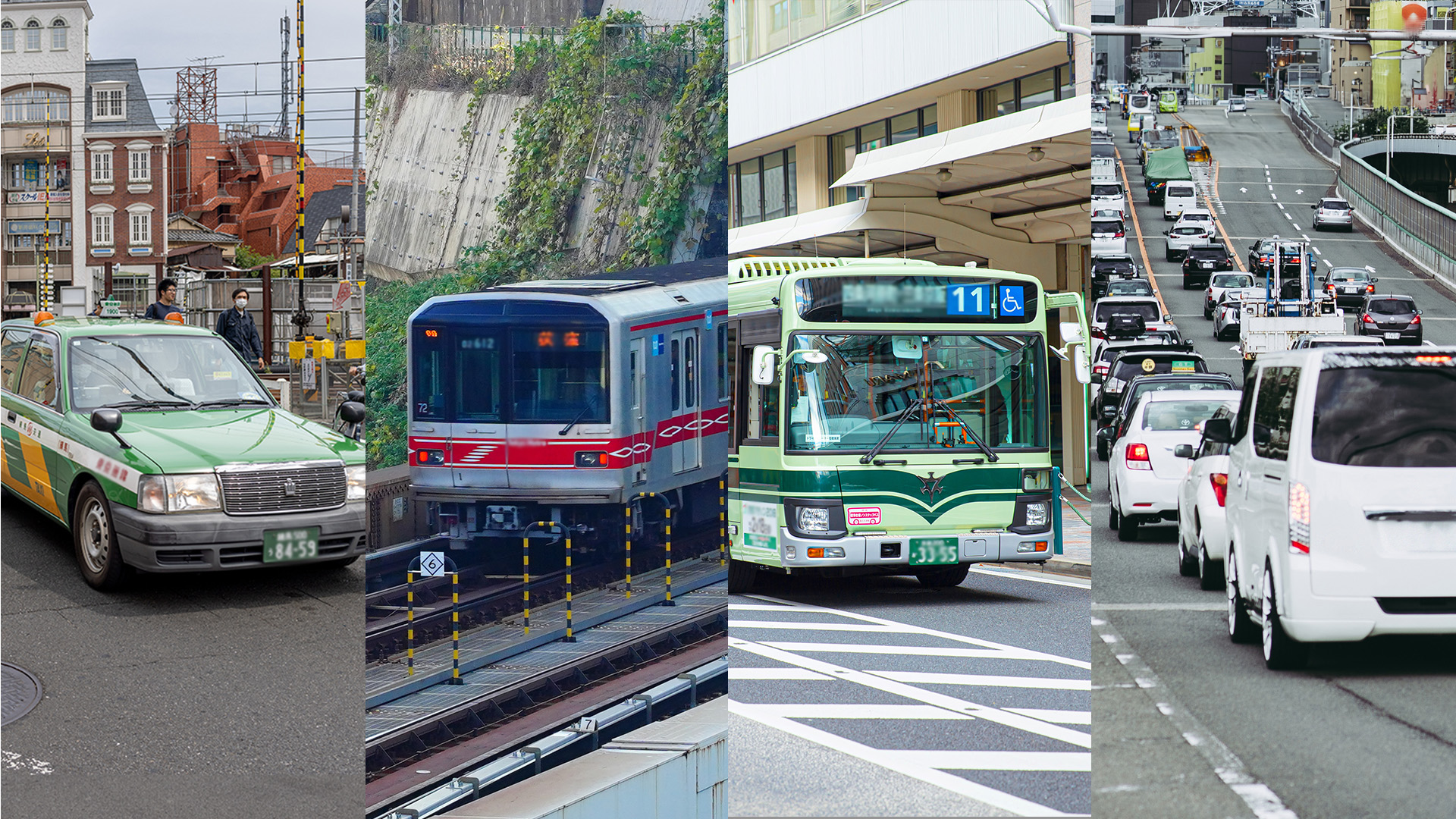

Abhineet Kaul
Economics Strategy


Swee Cheng Wei
Economics Strategy


Chailyn Ong
Economics Strategy


Authors: Abhineet Kaul (Access Partnership), Swee Cheng Wei (Access Partnership), Chailyn Ong (Access Partnership)
Advisors: Dr. Tomoaki Watanabe (GLOCOM), Dr. Masato Ito (GLOCOM), Tatsuo Tanaka (GLOCOM)
Summary: While Japan already boasts a high-quality transportation system well-utilized by people, there are new challenges in the face of societal changes, with one example being the recent taxi shortage. The user survey surfaced the reality that access is already becoming an issue, and many people are concerned about the future.
Japan’s transportation system is renowned for maintaining a strong focus on punctuality, safety, and quality. However, in light of the aging population, depopulation in regional areas, and labor shortage, there is a need to reassess the current situation and transportation strategy in order to ensure access to mobility for all groups.
As a first step to understanding the current situation of passenger transportation, Access Partnership, a leading policy consulting firm, has partnered with The Centre for Global Communications (GLOCOM) to conduct a nationwide user survey to better understand the transportation landscape in Japan.[1] Although there are existing studies on the transportation system, this survey aims to present fresh perspectives of people who live outside of large cities across Japan. We also took into account a variation of non-urban areas and different demographic groups.
We looked into how mass transit such as buses and trains, taxis, and other private transportation meet users’ needs in 3 types of geographical areas, namely small municipalities, medium cities, and cities in large prefectures.
Our survey reveals that respondents in Japan travel regularly, averaging 4.9 days per week and about 22% spend more than 1 hour traveling on average daily. Personal car is the most popular mode of transportation in all city types. The use of trains is also prominent in the cities in large prefectures, but in smaller municipalities, the dependency on personal cars is pronounced.
At the same time, almost half (49%) believe that Japan’s passenger transportation service is better than in other countries globally, showcasing the high regard that the Japanese hold their transportation system in.
| Very Satisfied | Satisfied | Dissatisfied | Very Dissatisfied | |
|---|---|---|---|---|
| Price | 4% | 13% | 21% | 12% |
| Driver quality and professionalism | 6% | 20% | 12% | 5% |
| Safety | 8% | 23% | 11% | 4% |
40% of respondents agree that Japan’s transportation adequately meets their needs, in contrast to 18% who disagree. When it comes to evaluating the adequacy of the current transportation options in their own cities, the result is even more mixed, with 31% responding positively and 30% negatively.[2]
Additionally, 34% recognize that the system has allowed them to access important opportunities and events (such as employment or healthcare) within the past 6 months, while 17% disagree. The response seems mixed about the adequacy and sufficiency of transportation service.
When asked about their experience of mobility problems in the last 6 months, 7% say that “they encountered a problem frequently (at least once a week),” 16% “sometimes (at least once a month),” and 27% “rarely (less than 5 times in 6 months).” Overall, half the residents sampled indicate that they had experienced difficulty traveling in the last 6 months.
Looking ahead, 43% are concerned that the transportation landscape may struggle to meet the needs of Japan’s new reality of a shrinking and aging population.
When it comes to ease of access, dissatisfaction surpasses satisfaction for public buses and taxis.
| Very Satisfied | Satisfied | Dissatisfied | Very Dissatisfied | |
|---|---|---|---|---|
| Price | 3% | 7% | 24% | 20% |
| Driver quality and professionalism | 4% | 13% | 14% | 7% |
| Waiting time | 3% | 12% | 18% | 9% |
| Saftey (includes personal cars) | 5% | 17% | 13% | 5% |
The lack of mass transit connectivity to get to certain areas has also been highlighted as a top concern across all geographic types. Table 3 below outlines the top issues users face with mass transit.
| City type | Top issues flagged |
|---|---|
| Small municipalities | • Taxi services are too expensive (33%) • Driving my own car/motorbike is too expensive (23%) • Flagging/booking a taxi is too time consuming (17%) |
| Medium cities | • Taxi services are too expensive (40%) • Flagging/booking a taxi is too time consuming (25%) • Driving my own car/motorbike is too expensive (24%) |
| Cities in large prefectures | • Taxi services are too expensive (43%) • Flagging/booking a taxi is too time consuming (27%) • Driving my own car/motorbike is too expensive (26%) |
Looking at the satisfaction level with different aspects of the transport services, from our survey, overall high dissatisfaction with prices is evident. This is also supported by inflation data that shows that the cost of public and private transportation has grown twice as fast (Jan 2022 – Jul 2024) compared to the cost of housing, even though it is slower than the pace of overall inflation.
For mass transit (Table 4-a), with which people are generally satisfied with driver quality and safety, the fare stood out with dissatisfaction (33%) almost being double of the level of satisfaction (17%).
For taxis (Table 4-b), those who are “strongly dissatisfied with the fare” (20%) and “dissatisfied” (24%) far surpasses the “strongly satisfied” and “satisfied” (in total 10%). Overall dissatisfaction was higher for driver quality and waiting time as well.
| 都市規模 | 最も利用する移動手段 |
|---|---|
| 人口5万人以下 | ● 自家用車 (78%) ● 徒歩 (27%) ● 自転車 (14%) |
| 中都市 | ● 自家用車 (71%) ● 徒歩 (33%) ● 自転車 (21%) |
| 大都市の郊外 | ● 自家用車 (52%) ● 徒歩 (50%) ● 電車 (39%) |
| 満足と回答した人の割合 | 満足 | 不満 |
|---|---|---|
| 電車の利用しやすさ | 30% | 23% |
| バスの利用しやすさ | 21% | 31% |
| タクシーの利用しやすさ | 18% | 23% |
Sentiments regarding taxis’ fare and waiting time are also evident across the types of cities (Table 5).
| 都市規模 | 回答が最も多かった課題 |
|---|---|
| 人口5万人以下 | ● 行き先によっては接続が悪い (29%) ● 運行時間が限られている (29%) ● 最寄りの駅が自宅から遠い。あるいは駅が目的地から遠い (25%) |
| 中都市 | ● 運行時間が限られている (33%) ● 行き先によっては接続が悪い(30%) ● 別の移動手段より遅く、時間がかかる (25%) |
| 大都市の郊外 | ● 満員電車など、車内が混雑している(36%) ● 行き先によっては接続が悪い(31%) ● 運賃が高い (27%) |
Given these results from the survey, raising fares to solve the taxi shortage issue in the industry (by raising drivers’ salaries) may not be realistic and could lead to public backlash. There is potential to drive down taxi demand further, especially in the less connected areas sampled in this survey.
These issues, while common across Japan, are particularly acute among underserved communities such as the rural populations and the elderly.
Respondents in smaller cities face greater difficulties when commuting, with only 17% of users agreeing that their city’s transportation system is adequate, compared to 31% nationally. These respondents also have more limited transportation choices (e.g., being serviced by only one mode of mass transit) and have cited challenges such as limited mass transit connectivity, while alternative modes of transport such as taxis are expensive.
Similarly, there are accessibility issues for the elderly. For instance, a higher share of respondents aged 65 to 79 disagree that the current transportation system is adequate in their cities, compared to the national average (31% vs 30%). They faced mobility problems when using the transportation system, particularly when making trips to their place of employment, traveling to airports/train stations when traveling out of the city, and accessing healthcare services. This demographic may also face a greater reliance on mass transit networks, particularly for those who may no longer be able to drive personal cars. This is supported by the higher percentage of people aged 80 and above who would like to see more taxi services in their cities, 32% versus the national average of 20%.[3]
There is a social and economic case to provide greater access to transport for all. Enhanced transportation access can create health benefits for the elderly, especially in smaller cities and towns. Connecting rural communities to larger cities also opens the possibility of added employment opportunities for people living in rural communities, and increases footfall for businesses in such communities, such as shopping malls, hospitals, and clinics. Increased connectivity beyond the large cities also brings tourism (domestic and international) to all parts of Japan.
These themes, along with more extensive insights from other stakeholders such as businesses and tourists, will be further explored in a full report expected to be released later in the year.
Moving forward, users in Japan see significant opportunities to address existing gaps in Japan’s transportation landscape, particularly as the population’s needs evolve. To enhance commuter experiences, they suggest lowering the prices of mass transit services (62%), increasing the frequency and coverage of mass transit services (57%) and improving the accessibility of infrastructure for other modes of transport such as cycling (51%).[4]
In addition, beyond upgrading existing systems, there is a need to explore alternative and more flexible transportation solutions. For instance, 30% of all respondents emphasize the need for new options such as ridesharing and on-demand buses to better meet commuter needs. This opinion is felt more strongly in small municipalities[5] with 35% highlighting that these new options are essential.
As Japanese society faces the serious challenges of aging, depopulation, and labor shortage, reassessment of policies and strong leadership are needed to maintain and build a transportation system that serves everybody.
Other related links: